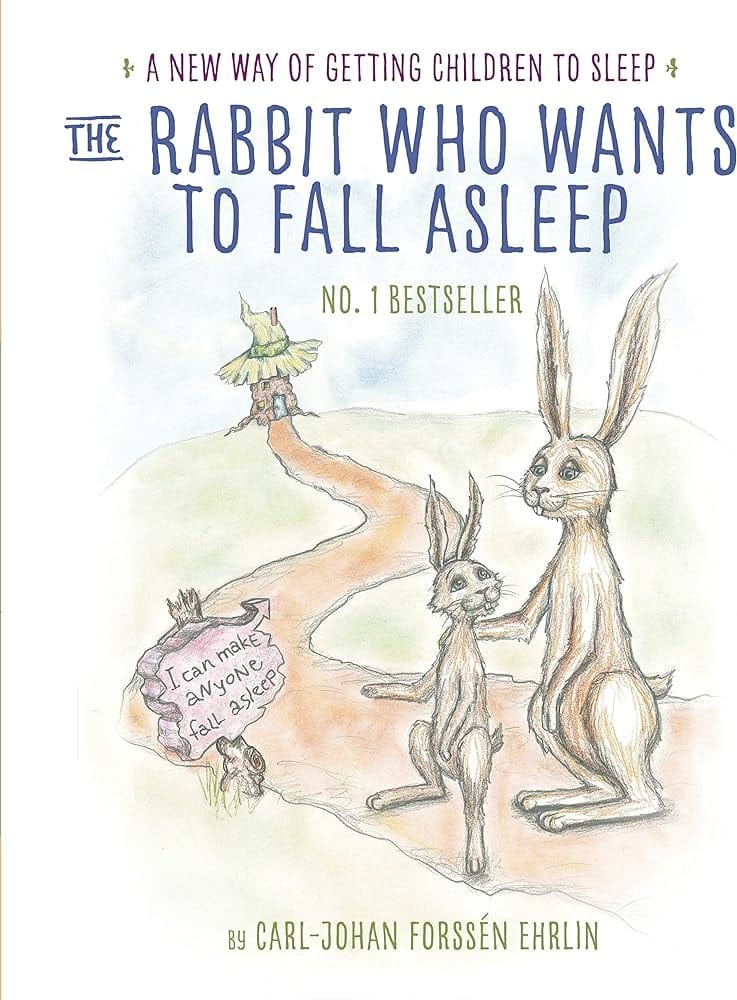Guiding Your Child to Dreamland: “The Rabbit Who Wants to Fall Asleep” Explained
Hey there, wonderful parents! Are you on a whimsical quest to find a soothing bedtime solution for your little one? Have you heard whispers of a magical rabbit who could be the answer to peaceful nights? ??? Well, hop on in, because we’re about to embark on a journey into the enchanting world of “The Rabbit Who Wants to Fall Asleep”, a book that’s hopping into parents’ bedtime repertoires everywhere!
Why “The Rabbit Who Wants to Fall Asleep” Hops into Hearts
Created by Carl-Johan Forssén Ehrlin, “The Rabbit Who Wants to Fall Asleep” is not just any bedtime story. It’s a sleep-inducing treasure that has been specially designed with psychological techniques to help children relax, unwind, and drift off into the land of nod with the help of Roger the Rabbit and friends. But let’s not rabbit on about it; let’s dig into what makes this book a must-have in your bedtime routine!
A Parent’s Guide to “The Rabbit Who Wants to Fall Asleep”
For starters, this guide isn’t just about praising the book—it’s about giving you the ? tools ? you need to maximize its potential. We’re going to cover the following burrows of knowledge:
- Understanding the Concept: What’s behind the book’s magic?
- Pre-Bedtime Best Practices: Tips to set the stage for a good night’s sleep.
- How to Read “The Rabbit Who Wants to Fall Asleep”: Techniques to enhance the story’s sleepy power.
- FAQs and Troubleshooting: Answering common concerns and potential bumps in the nighttime routine.
Understanding the Concept
Before we skip ahead, let’s cuddle down ? and understand the crux of this book: It’s about the journey, not just the destination. That’s to say, the story isn’t just about getting to sleep—it’s about creating an experience that guides relaxation and invites sleep in a natural and comforting way. Using a mindful storytelling technique with guided meditation, it promotes mental relaxation that nudges children towards sleepiness.
The Science of Sleepy Tales
Believe it or not, there’s some serious noggin knowledge supporting the method behind the rabbit’s magic. The book employs techniques like focused relaxation and the use of reinforcement and suggestion, which are parts of cognitive-behavioral therapy. The narrative includes cues and prompts that encourage children to yawn (yep, even if they’re “pretend” yawns), potentially triggering real ones, and introduces characters that children can empathize with and ride along with on their sleep journey.
Now, let’s not forget, every bunny’s different! Your child’s sleep journey is unique, and while Roger the Rabbit might be the ticket to dreamland for many, others might need a few reads or different approaches—which is totally okay. Adjusting expectations and being patient is key to the bedtime tail—I mean, tale.
Hopping into the Pre-Bedtime Ritual
Before you even open the book, setting the right ambiance is crucial. Ensure the environment is conducive to sleep—think dim lights, comfortable temperature, and a cozy bednest. This means, no screen time an hour before the planned sleep time, as the blue light from devices can keep your kiddo more awake than a nocturnal hare!
Remember, “The Rabbit Who Wants to Fall Asleep” is not a quick fix—integrate it into your existing routine or create a new one around it. Consistency is key in developing healthy sleep habits, and coupling the story with other relaxing activities like a warm bath or some gentle stretches can enhance the effect.
Alright, are you feeling ready to tiptoe through the meadow with Roger the Rabbit? Let’s dive into the next section, where we’ll explore just how to read this captivating story to invoke its full snooze-inducing potential. Get your snuggliest blanket, and prepare to turn that bedtime struggle into a sleep-inducing cuddle!
Stay tuned, as we’re just at the start of this sleep-filled adventure. The journey towards better bedtimes for your kids is paved with cosy cuddles, magical characters, and transformative storytelling techniques. Ready to become the bedtime maestro with the help of a sleepy rabbit? Let the dreamy voyage begin!

5 Things Parents Should Know in Preparing for “The Rabbit Who Wants to Fall Asleep”
Create a Sleep-Inducing Environment
Make sure the physical setup in your child’s bedroom is primed for sleep. A quiet, dark room with comfortable bedding is essential. Use blackout curtains to keep out unwanted light and consider a white noise machine if your little one is sensitive to sound. The right environment works hand in hand with our rabbit friend to coax your child into dreamland.
Establish a Calming Pre-Bedtime Routine
Routines are the backbone of bedtime success. It might include a warm bath, some gentle stretching, or a few minutes of calm talking about the day. It’s about doing the same things in the same order every night so that your child learns to associate these activities with sleep. When “The Rabbit Who Wants to Fall Asleep” becomes part of this routine, your child will start to associate it with sleepiness too.
Set Aside Enough Time
Reading “The Rabbit Who Wants to Fall Asleep” takes more time than your average bedtime story. It’s meant to be read slowly and calmly, so be sure to set aside enough time to read it without rushing. This could be anywhere from 20 minutes to an hour depending on how you pace the story and your child’s reaction to it.
Use a Calm and Soothing Voice
Your voice is a powerful tool in this journey. Use a calm, slow, and soothing tone to enhance the drowsy atmosphere. The book will cue you on how to modulate your voice to maximize relaxation, but be prepared to embrace your inner narrator and convey sleepiness through your tone and pace.
Be Patient and Flexible
If the first reading doesn’t send your kiddo straight to dreamland, don’t be discouraged. Like any new routine, it might take time for your child to get used to it. Be willing to adjust your approach and even read the story more than once if needed. Look for cues from your child and adapt as necessary; the goal is a restful night, not a race to the finish line.
Equipped with these insights, you’re now ready to set the stage for a tranquil bedtime, complete with a bunny that’s eager to help your child fall asleep. “The Rabbit Who Wants to Fall Asleep” is a tool, but your preparation and use of it are just as important. So fluff up those pillows, dim the lights, and get ready to embark on a soothing storytelling adventure that’s meant to end with your little one in the land of dreams.
Note on Embracing the Journey
Remember, the book is just the beginning of a beautiful sleep-centered journey. Enjoy the process, embrace the cuddles, and take pride in knowing you’re not just helping your child sleep but also creating lasting bedtime memories.
Immersed in the tranquil world of Roger the Rabbit and his friends, your child will learn the art of falling asleep gently and naturally. As parents, we strive for our little ones to feel safe and secure, especially as they drift off to sleep. With “The Rabbit Who Wants to Fall Asleep,” you have a fluffy ally in making bedtime a serene and cherished part of your child’s day.
The quest for the perfect bedtime may come with its challenges, but fear not, for you’re equipped with more than just a book—you’re armed with love, care, and a sprinkle of sleepy magic. Let the pages turn, the yawns escape, and the eyelids grow heavy, for tonight, a rabbit leads the way to sweet dreams and restful nights.
See more great Things to Do with Kids in New Zealand here. For more information see here
Disclaimer
The articles available via our website provide general information only and we strongly urge readers to exercise caution and conduct their own thorough research and fact-checking. The information presented should not be taken as absolute truth, and, to the maximum extent permitted by law, we will not be held liable for any inaccuracies or errors in the content. It is essential for individuals to independently verify and validate the information before making any decisions or taking any actions based on the articles.




